
We spotted this waterfall while driving on South Lake Road.
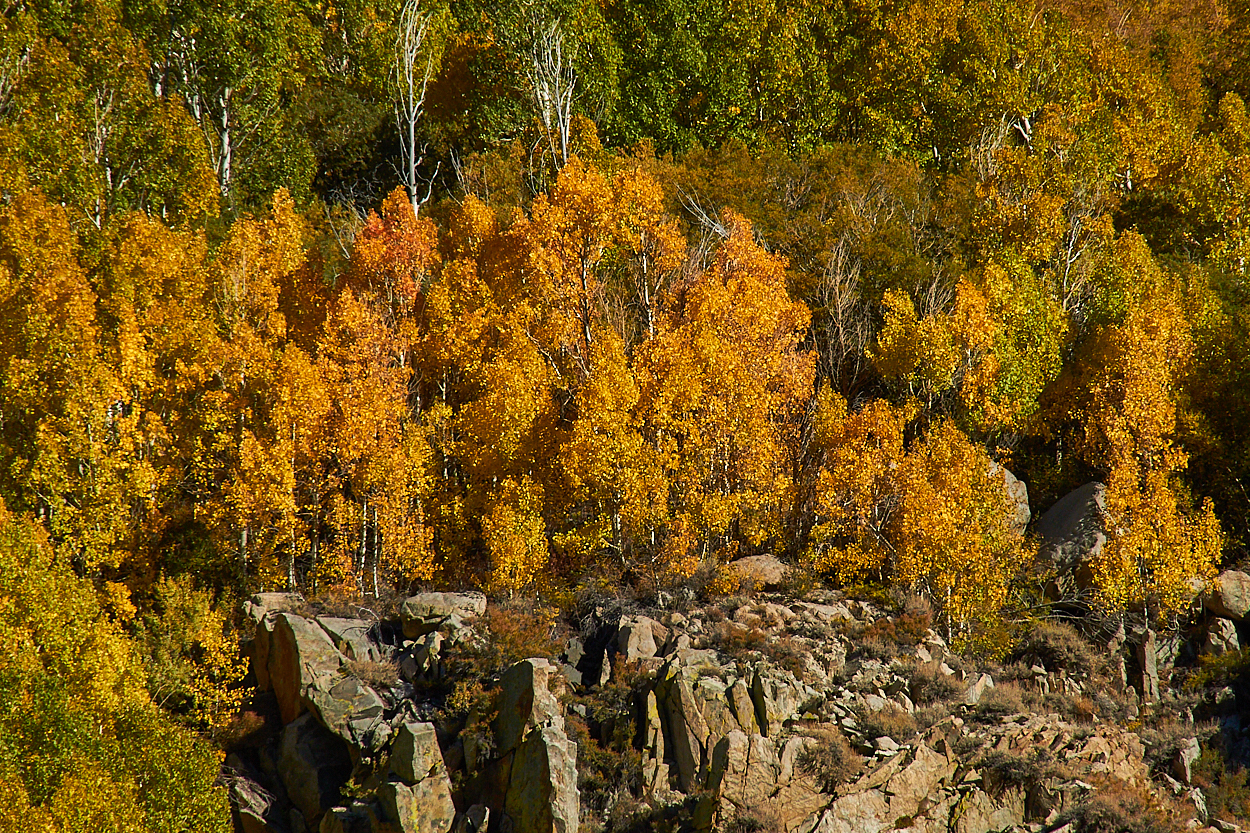
This stand of trees is to the right of the waterfall in the previous picture. I was drawn by the orange color of the leaves - most trees we saw had yellow leaves.
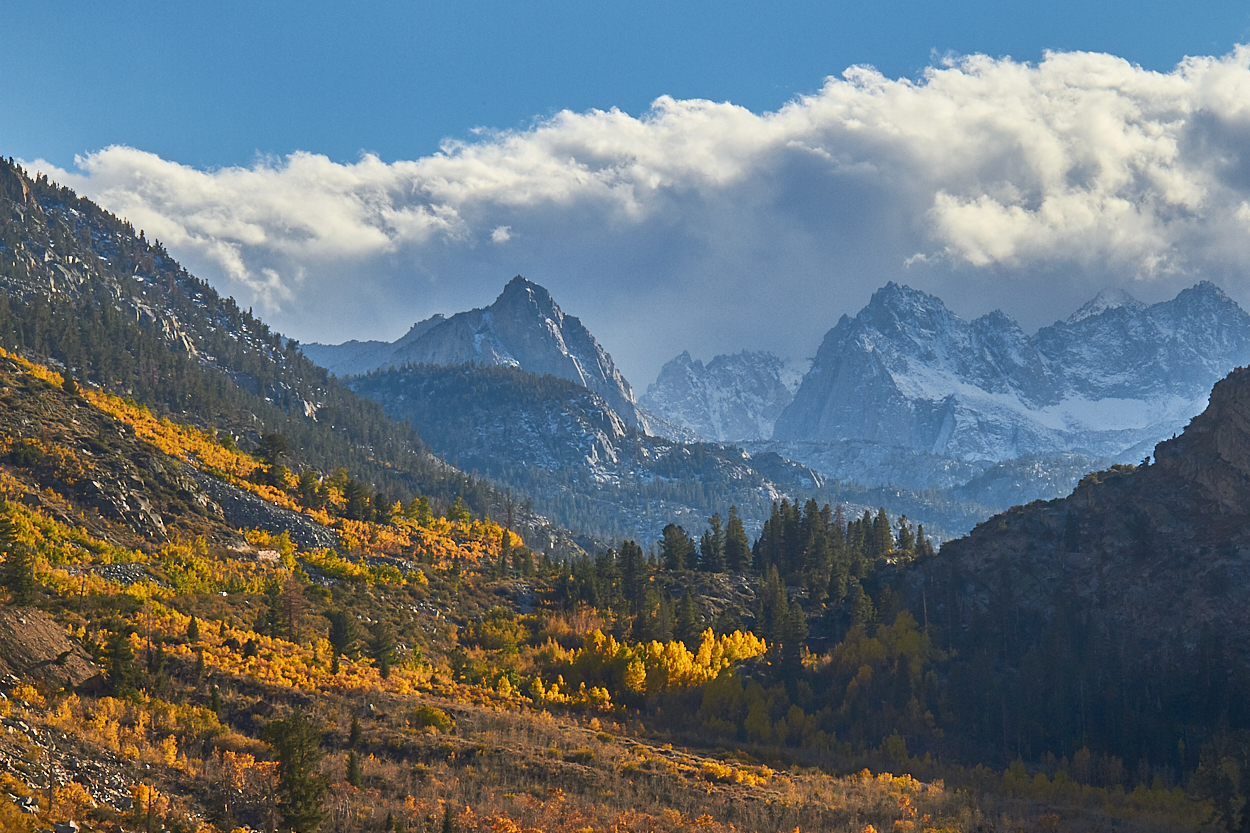
This is a view of the Eastern Sierras from Highway 168, near Aspendell.
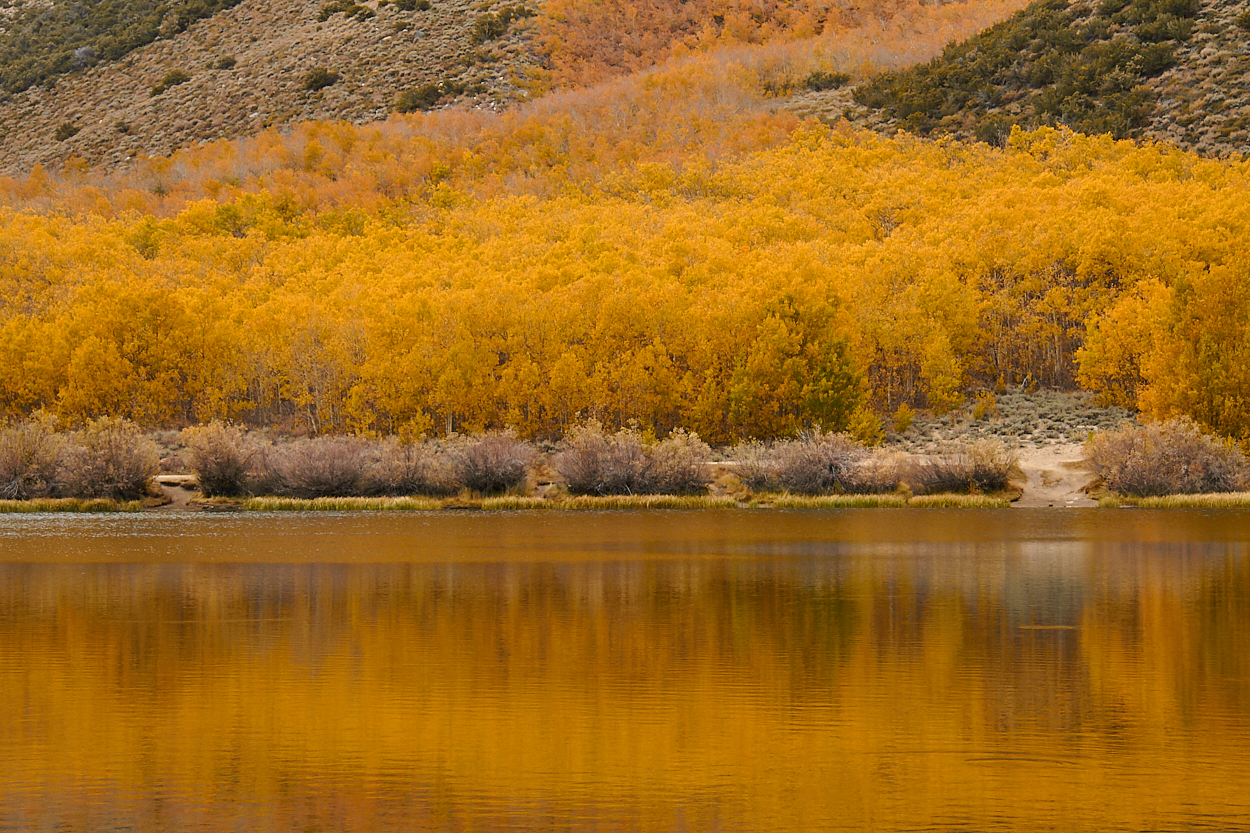
Fall colors and their reflection in North Lake.
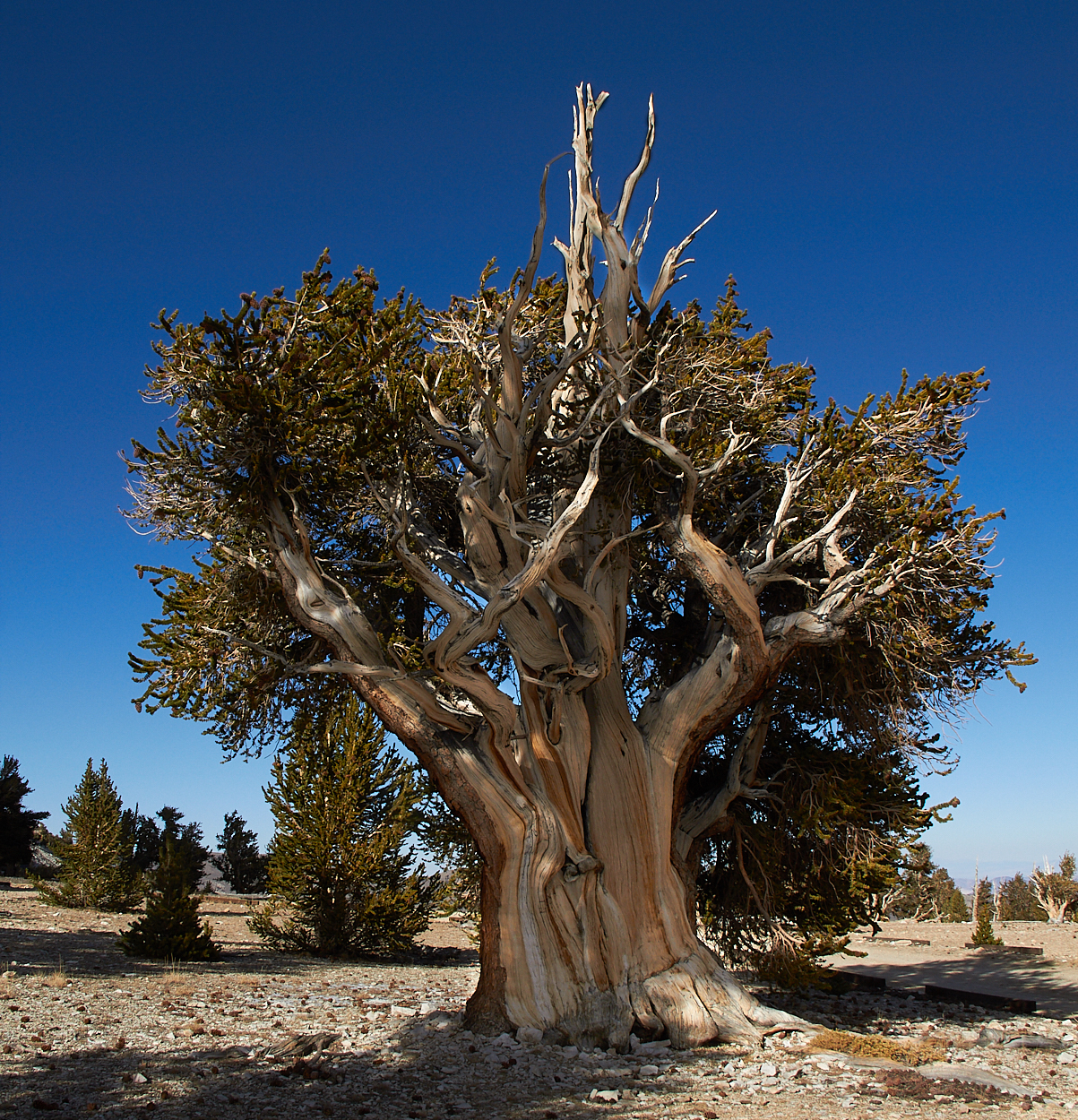
This Bristlecone Pine is by the entrance to the parking lot for Patriarch Grove, at an elevation of 11,000 ft. This is a good example of a common phenomenon with Bristlecone Pines - part of the bark is blasted away by wind driven ice and sand, leaving the wood exposed.
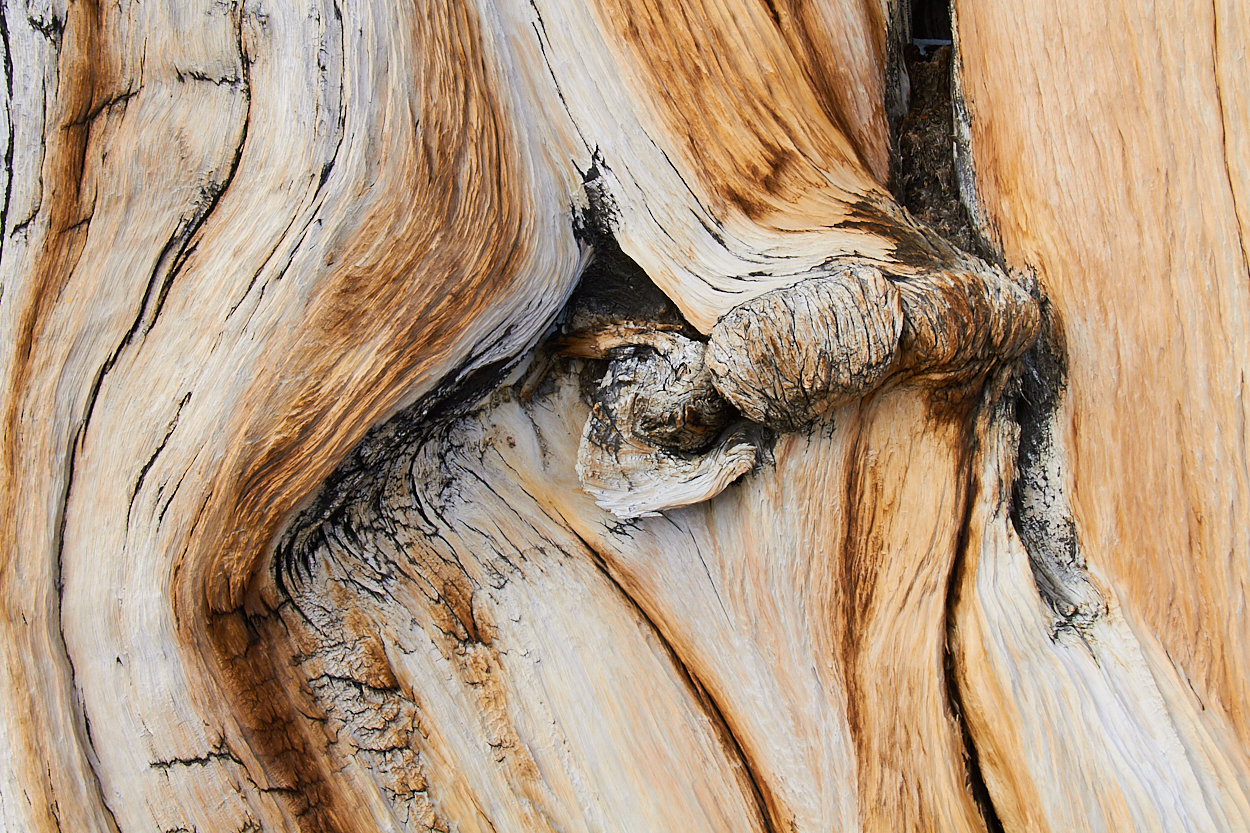
This is a closeup of the exposed part of the trunk of the tree in the previous picture. I love the blend of colors and textures.
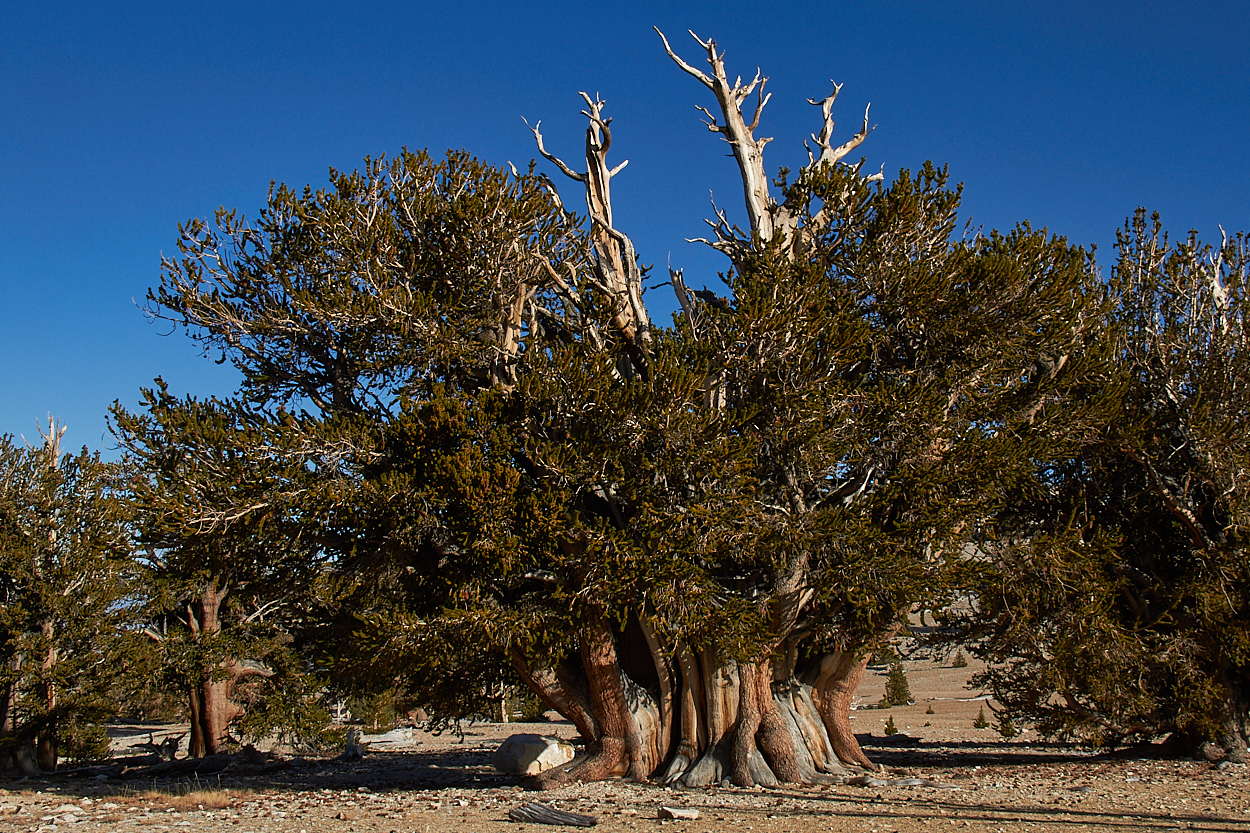
This is the Patriarch, for whom this grove was named. Its circumference is approximately 36 ft, and it looks like it is composed of multiple trees growing together.
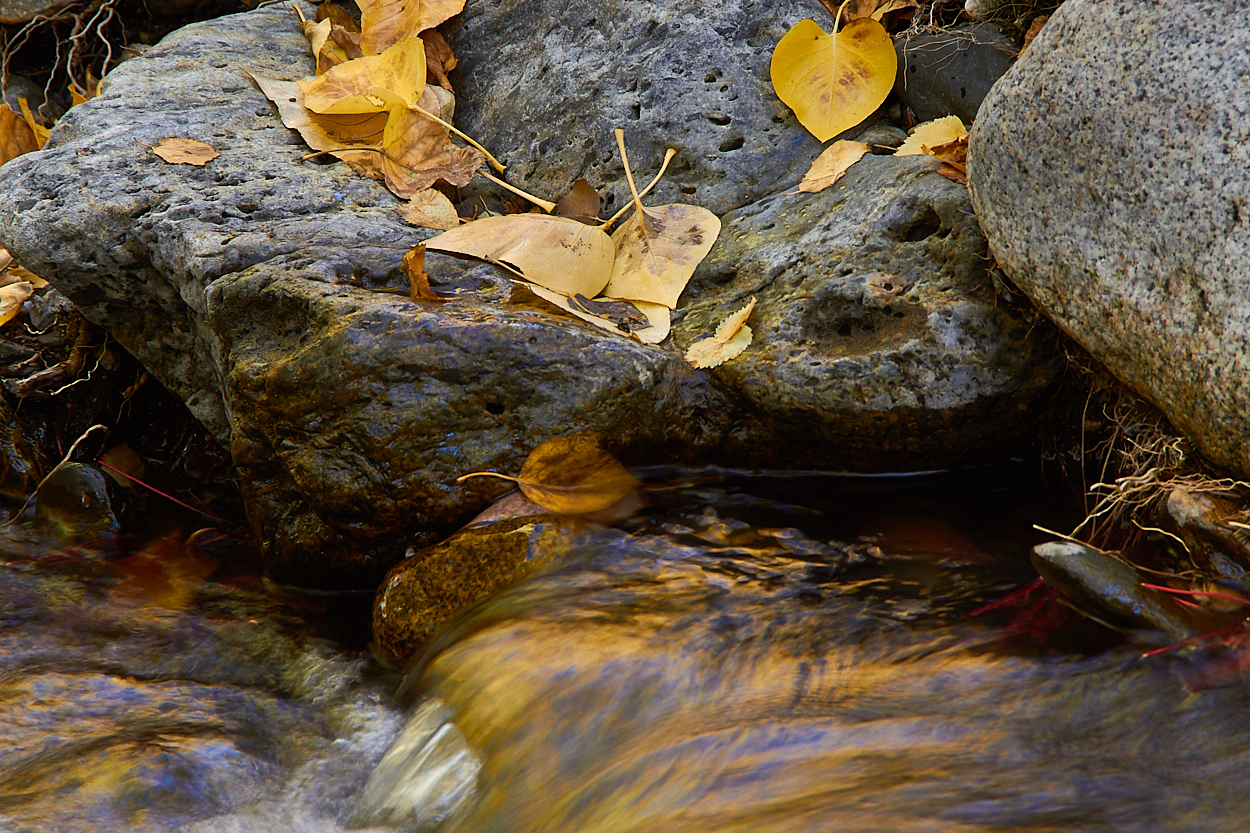
Aspen leaves on a rock by McGee Creek. This was taken near the end of McGee Creek Rd, which heads into the Sierras about 30 miles north of Bishop.
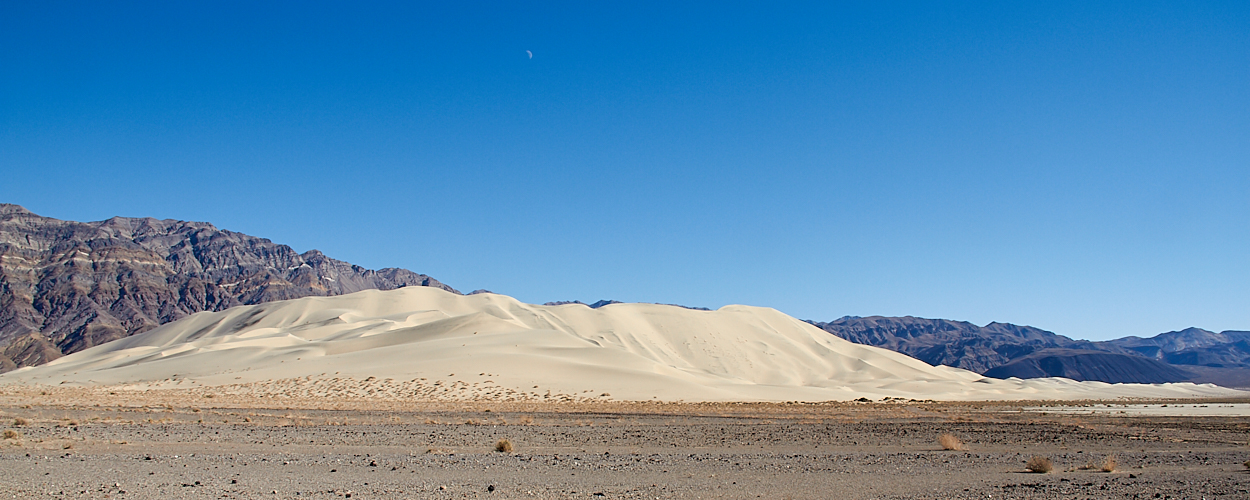
This is a view of the Eureka Dunes from about a half mile away. These dunes are in the Eureka Valley, in the northern part of Death Valley National Park. These dunes rise to about 700 feet above the surrounding valley, making them among the highest in North America.
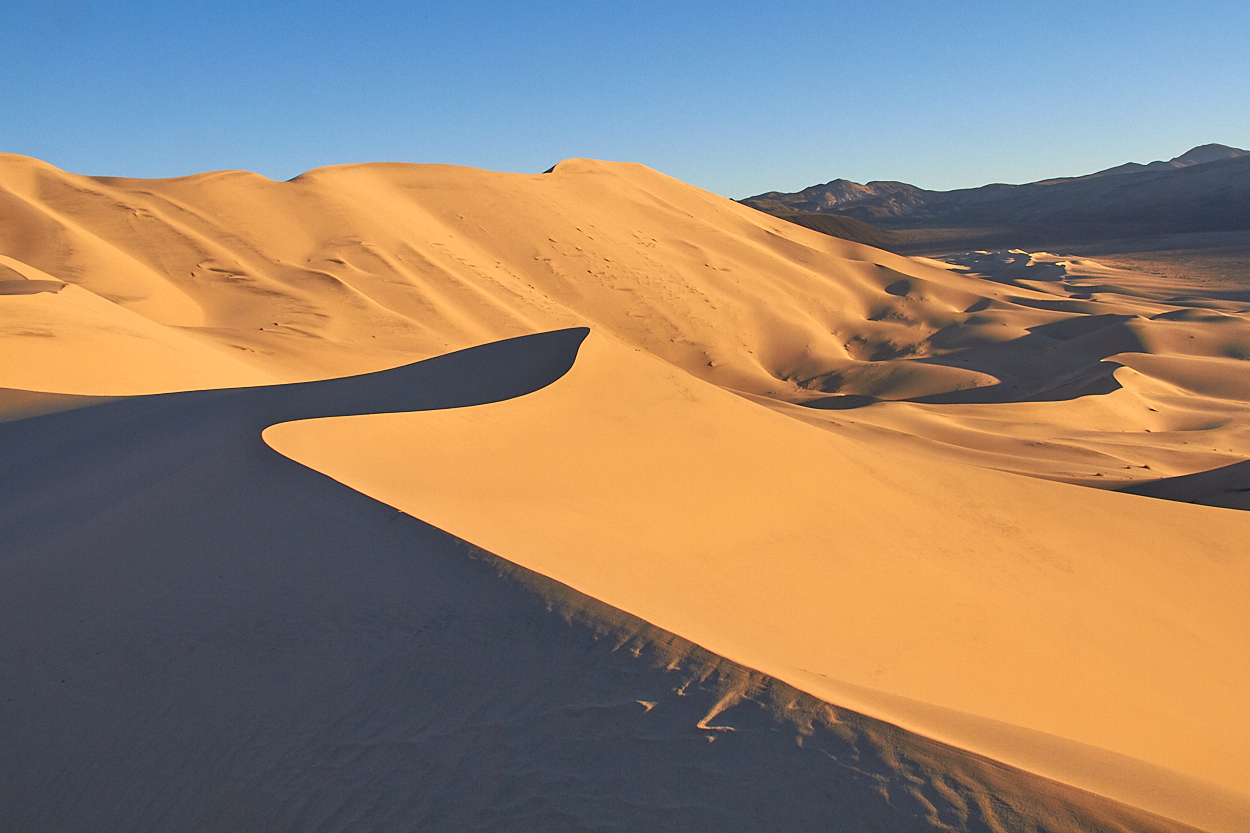
This is another view of the Eureka Dunes, taken from the top of one of the dunes nearest the parking area, about a half hour before sunset.
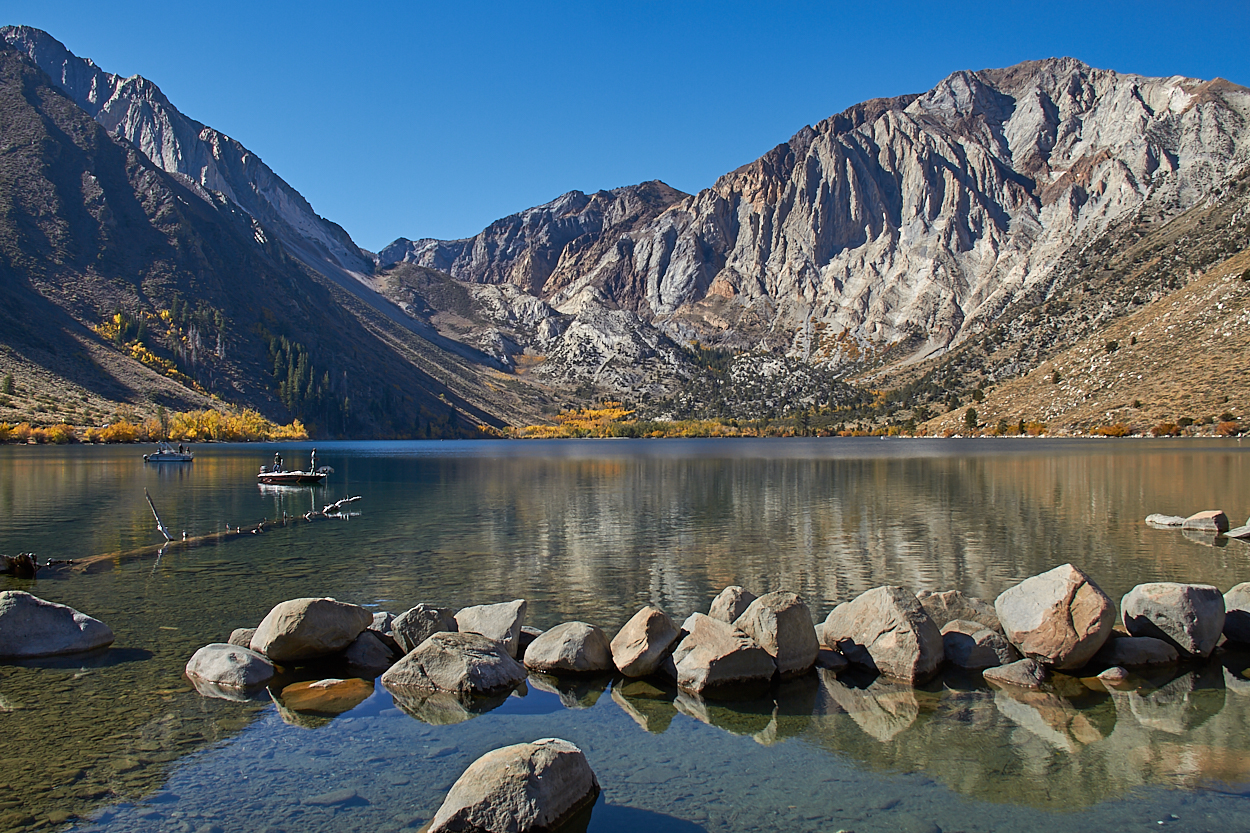
This is Convict Lake, about 3 miles south of US 395. It got its name from an 1871 incident in which there was a shootout between escaped convicts and a local sheriff's posse.
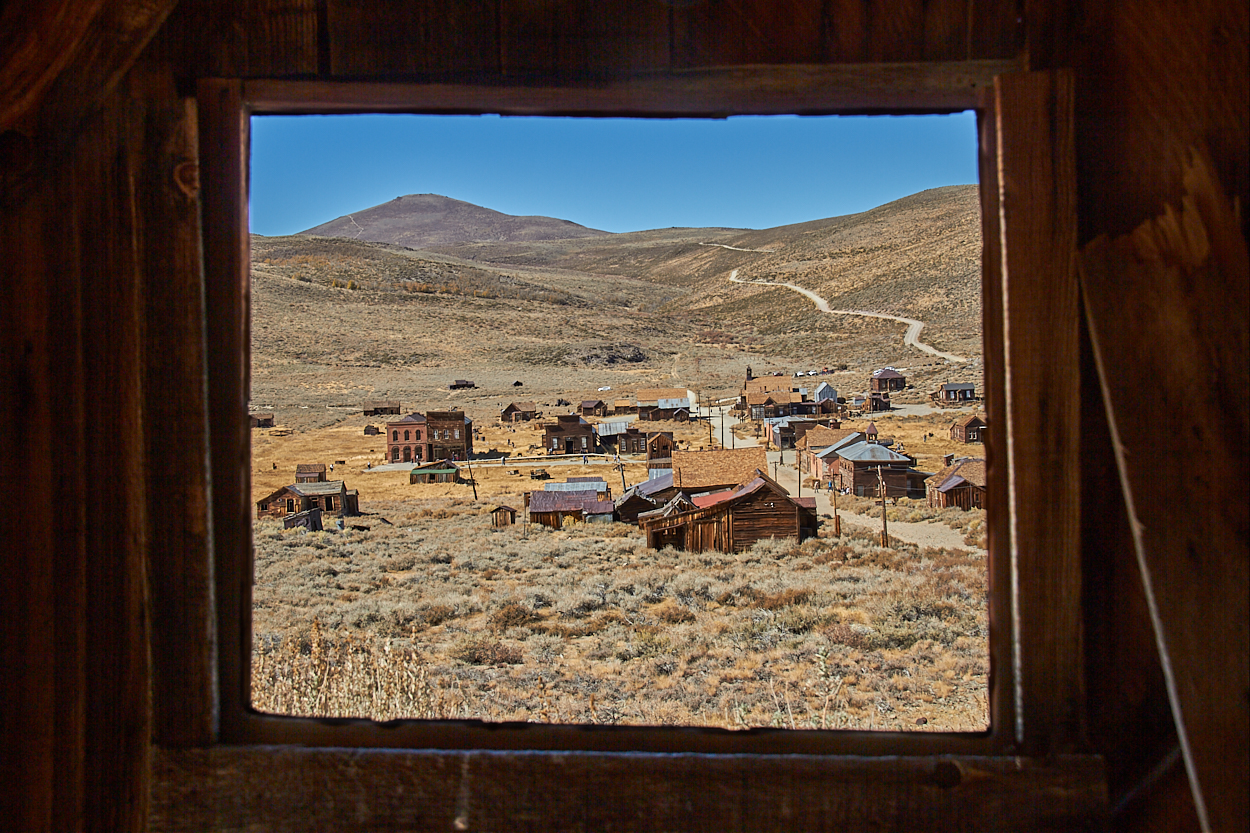
This is a view of Bodie, California, from inside one of the buildings. Bodie is a ghost town that is now a California State Park.
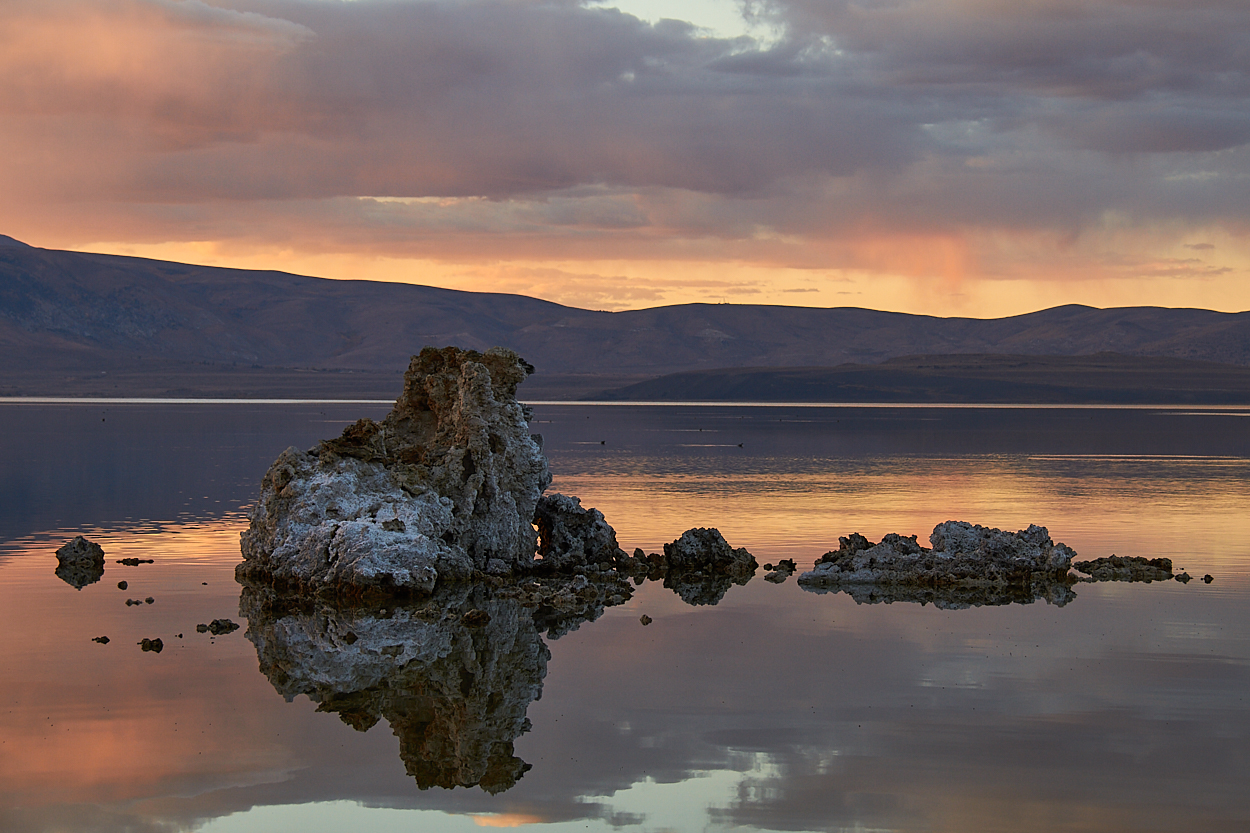
Tufa in Mono Lake at sunset. Tufa forms when underwater springs with calcium come into contact with Mono Lake's water, which is rich in carbonates. A chemical reaction takes place, resulting in calcium carbonate - i.e., limestone. The limestone settles out of the water around the spring, and thus the tufa towers grow. These towers grow underwater, but many can be seen today due to Mono Lake's level falling dramatiacally after water diversions began in the 1940s.
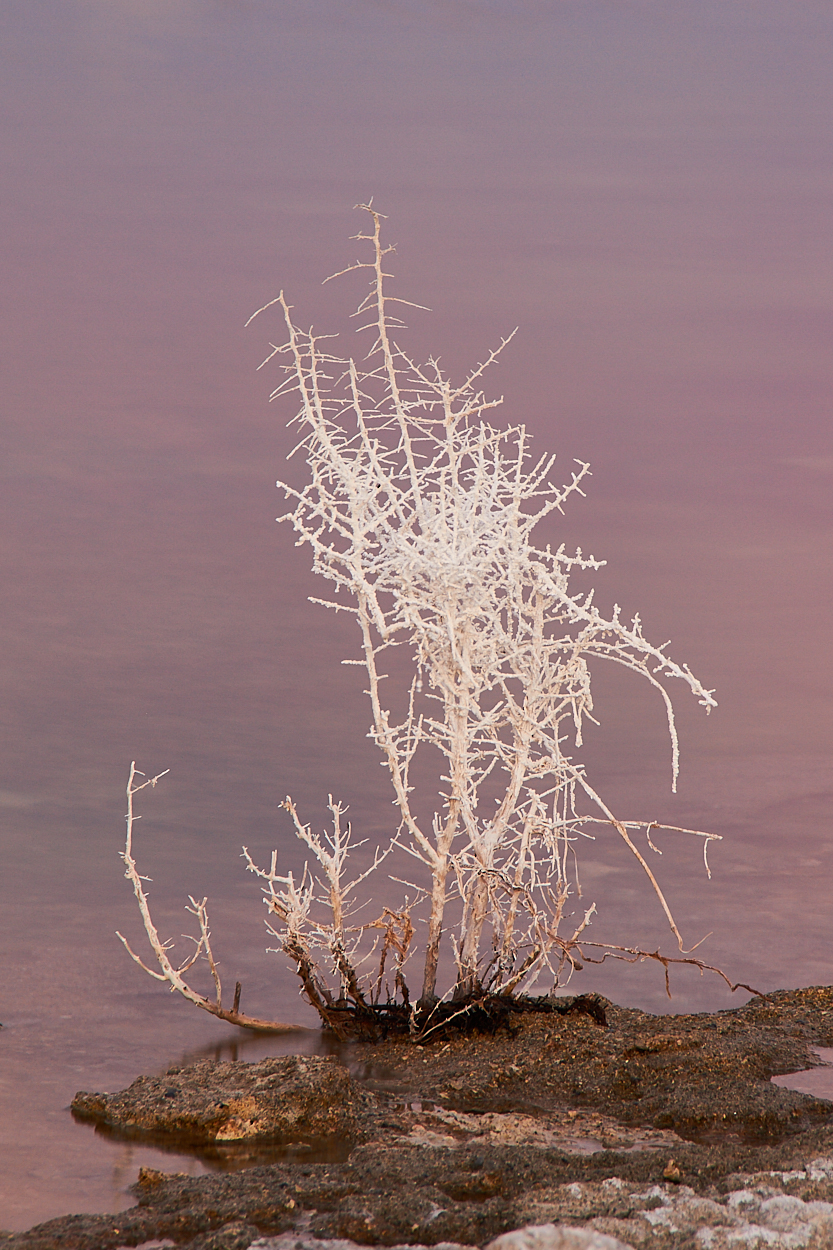
A salt encrusted plant on the shore of Mono Lake with sunset colored water in the background.